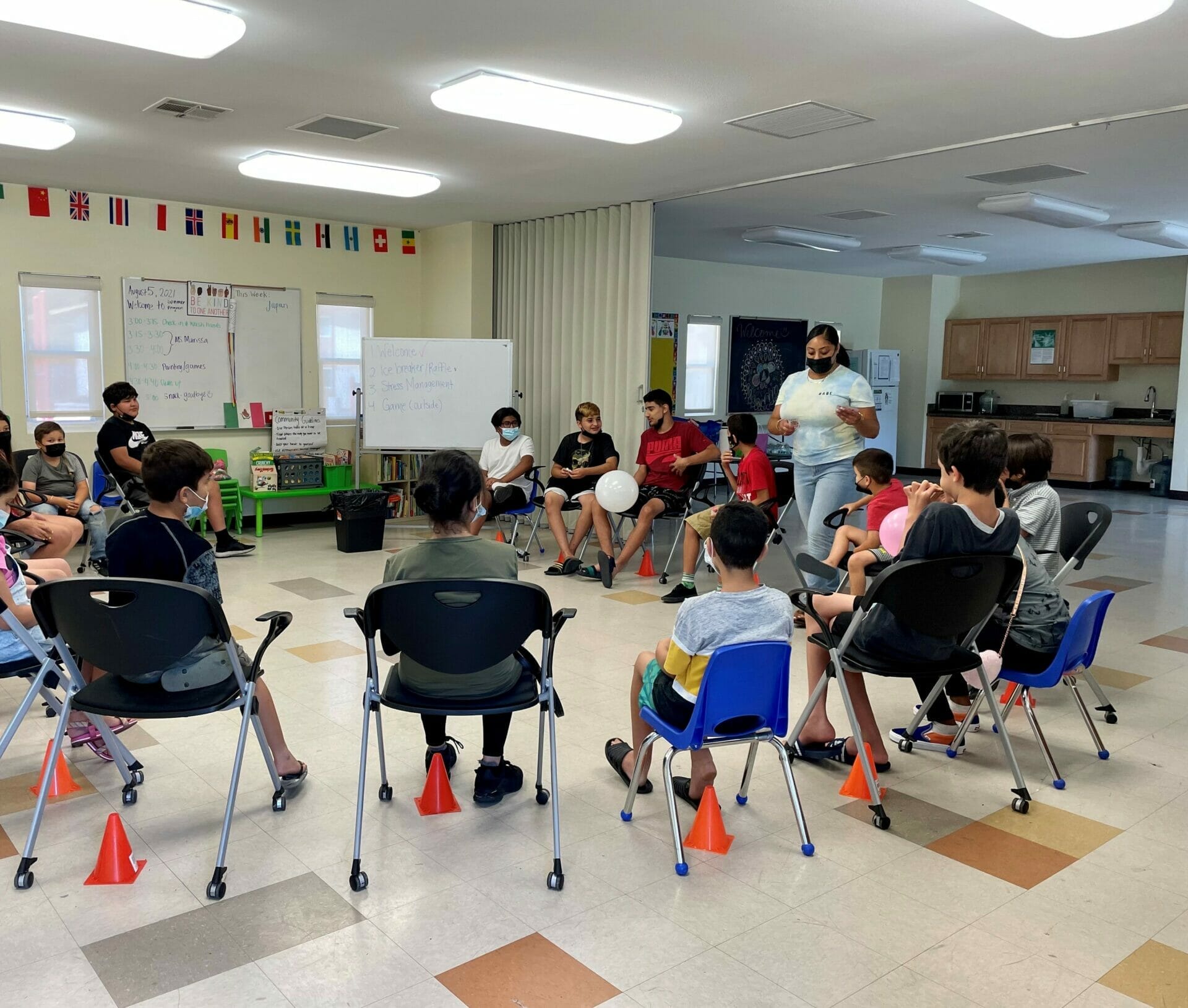News > Blog
Facts about Human Trafficking and COVID-19’s Impact on the Illicit Industry
Published 02/01/2022 by Lizzie Hickman

By Lizzie Hickman
Although Human Trafficking Awareness Month is coming to a close, Global Communities continues our work to diminish human trafficking in San Diego by educating children, parents and teachers to identify the signs of exploitation and offer empowerment programs that reduce children’s vulnerability to traffickers. We also press on to mitigate the spread of COVID-19 across the globe through program adaptations and outreach campaigns related to testing, vaccines, handwashing, social distancing and other proven safety measures. While human trafficking and the pandemic may seem unrelated, a little-known consequence of the pandemic is an increase in human trafficking.
Human trafficking is defined as use of force, fraud or coercion to obtain labor or a commercial sex act. According to the U.S. Department of State, 27 million people are trafficked each year with 18,000 victims in the U.S. The estimated average age of entry for girls into the sex trade is 14 years old.
Traffickers typically target people who lack defense and protection and are pushed to the margins of society by race, gender, age, ethnicity, sexual orientation or poverty. Some common contributors to vulnerability are:
- Poverty
- Access to housing
- Lack of parental supervision
- Lack of online safety and awareness
- Lack of citizenship, immigration and or refugee status; and
- Racial disparities associated with being a person of color.
A common myth when it comes to trafficking is that perpetrators are strangers to their targets. In reality, they can be family members, close acquaintances, partners or peers. According to the Polaris project, 42 percent of people who are trafficked were brought into it by family members. Additionally, recruitment via intimate partners went up to 27 percent in 2020 from 22 percent in 2019.
As the world moved indoors because of stay-at-home orders in 2020 and 2021, workplaces shut down, funding was diverted from anti-trafficking efforts and socializing shifted online. Each of these factors increased contributors of vulnerability to at-risk groups. Lockdowns disrupted the ability of many women to continue working, while restricted travel increased food scarcity for those living in food deserts. Women and girls experiencing human trafficking also saw higher rates of domestic and gender-based violence, as they were spending more time at home with their abusers.
In response to the pandemic, traffickers adapted their tactics to the digital world. In 2020, 83 percent of criminal sex acts were solicited online according to the Human Trafficking Institute, a 22 percent increase from the previous year. Facebook saw a 125 percent increase in reports of recruitment. In San Diego, reports of internet crimes against children have tripled, as kids are more comfortable taking instruction from adults through webcams because of distance learning.
Children are not the only group at higher risk of victimization as a result of the pandemic. A higher demand for sex buying has increased the risk of revictimization since income streams have dried up due to lockdowns. The rapid pace of lockdowns and digitization have also made it difficult for those at risk to build resilience against contributors to vulnerability.
Human trafficking is a tough topic to discuss, made heavier by the impact the pandemic has had on anti-trafficking efforts. The good news is you can get involved by volunteering at local anti-trafficking organizations or by knowing how to spot signs of human trafficking through brief interactions, behavioral red flags or physical red flags.
What to look for in brief interactions:
- Fearful or nervous behavior
- Emotionally blocked from supportive conversation
- Can’t detach from their cell phone
- Seems to be deprived of basic needs
- Accompanied by an older person in an unusual environment, for example at a hotel
Behavioral red flags from someone you know:
- Changes in mood or behavior
- Secrecy or vagueness
- Unable to contact family members and/or family members unable to contact the individual
- Lack of control over their life
- Lack of identification
- Only identified by an alias or street name
Physical red flags:
- Tattoo branding, usually on the back of the neck, lower back, arms, hips or hand
- Evidence of physical abuse
- Signs of having been denied food, water and other necessities
- Substance abuse
- Extreme exhaustion
To learn more about how to get engaged in anti-trafficking work or to find additional resources and information, visit the San Diego Trafficking Prevention Collective, of which Global Communities is a partner.





